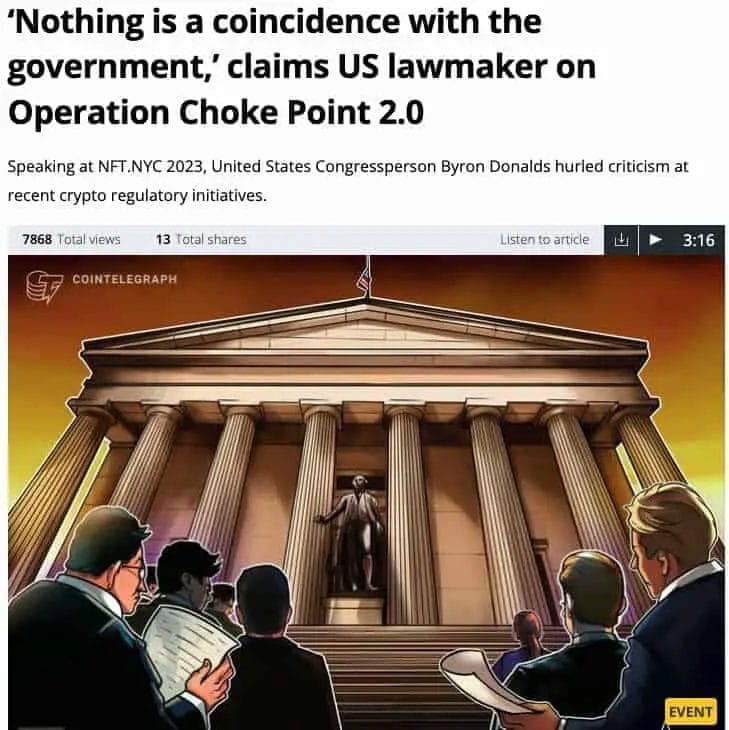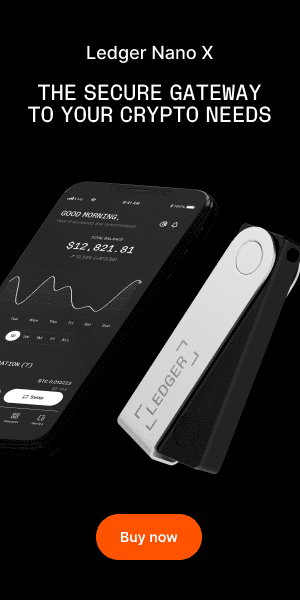In today’s rapidly evolving financial landscape, the cryptocurrency industry faces a new regulatory challenge: Operation Choke Point 2.0. This controversial initiative, with roots tracing back to its predecessor, has the potential to reshape the crypto world as we know it. But what exactly is Operation Choke Point 2.0, and how does it relate to the original operation that targeted certain businesses?
We’ll dive deep into the origins, implications, and potential impact of this regulatory move on the cryptocurrency industry. Join us as we unravel the complexities of Operation Choke Point 2.0 and explore its far-reaching consequences for the future of digital currencies.
What is Operation Choke Point 2.0?
Operation Choke Point 2.0 refers to the alleged coordinated efforts by the Biden administration to target the cryptocurrency industry and cut it off from the U.S. banking sector. This initiative has been compared to the original Operation Choke Point, a 2013 initiative by the United States Department of Justice, which investigated banks in the U.S. and their business relationships with firearm dealers, payday lenders, and other high-risk companies for fraud and money laundering.
Operation Choke Point 2.0 targets crypto businesses by labelling them as a threat to the financial system, a source of fraud and misinformation, and a risk to bank liquidity. Unlike the original operation, Choke Point 2.0 is implemented through rulemaking, written guidance, and blogs, which has led to it being referred to as “regulation by blog post”. Critics argue that this initiative violates the non-delegation doctrine and the anti-commandeering doctrine, depriving Americans of key structural constitutional rights.
How Will Operation Choke Point 2.0 Impact the Crypto Industry?
Operation Choke Point 2.0 will affect the cryptocurrency industry by targeting legal crypto businesses and cutting them off from the banking rails. As a result, banks may be forced to shut down due to their services being provided to crypto businesses.
This coordinated effort aims to de-platform crypto from the banking system. The tightening regulations and enforcement actions may hinder the growth of the crypto industry, as entrepreneurs and pioneers could be discouraged from taking risks to evolve the system forward. Critics argue that the United States will be the biggest loser from Operation Choke Point 2.0 as the country moves away from promoting innovation and toward a market-driven fear.

What is Operation Choke Point 1.0?
Operation Choke Point 1.0 was an initiative of the United States Department of Justice that began in 2013. The operation investigated banks in the United States and their business relationships with firearm dealers, payday lenders, and other companies believed to be at high risk for fraud and money laundering.
The program operated unrestrained for years, with officials from both the Comptroller of the Currency (OCC) and the Federal Deposit Insurance Corporation (FDIC) involved. The guidance in Choke Point 1.0 was mainly informal, involving backdoor, off-the-record conversations. Its primary tool was the threat of investigation from the DoJ and FDIC if financial institutions did not internalize the administration’s risk standards.
Operation Choke Point 1.0 was criticized for exceeding legal limits and targeting lawful businesses based on personal disdain and ideological differences. Critics argued that the initiative was fundamentally unfair to banks and legal businesses, as it led to their banking services being cut off.
How did Operation Choke Point 1.0 Impact Targeted Businesses?
The original Operation Choke Point 1.0 had a significant impact on its targeted businesses. Many of these businesses, including firearm dealers, payday lenders, and other companies believed to be at high risk for fraud and money laundering, were unable to obtain financial services from banks or other financial institutions.
Services such as loans or credit card processing became inaccessible for these businesses. As a result, many businesses were forced to shut down or move their operations due to the lack of access to essential financial services. The overwhelming evidence, including over 900 pages of newly unsealed emails and depositions, showed that government officials illegally targeted lawful businesses in an ideological crusade based on personal disdain.
What are the Differences Between the Original Operation Choke Point & 2.0?
The differences between the original Operation Choke Point and Operation Choke Point 2.0 include the following:
- Targeted Industries: The original Operation Choke Point, initiated in 2013, investigated banks in the United States and their business dealings with firearm dealers, payday lenders, and other companies believed to be at high risk for fraud and money laundering. In contrast, Operation Choke Point 2.0 targets the cryptocurrency industry, aiming to cut off crypto businesses from the banking sector.
- Regulatory Approach: In the original Operation Choke Point, guidance was primarily informal and involved off-the-record, backdoor conversations. However, in Operation Choke Point 2.0, the approach has evolved, and the administration uses rulemaking to implement its crackdown on the crypto industry. This shift indicates that the administration has learned from the original operation and is now using more transparent methods to communicate its intentions.
Why is the US Government Worried about Cryptocurrency?
The US government is worried about cryptocurrencies for several reasons. One major concern is the potential risk they pose to financial stability and monetary policy. Cryptocurrencies, such as Bitcoin, are not backed by tangible assets and can be highly volatile. This volatility and lack of central control can create challenges for regulators in maintaining a stable financial system.
Cryptocurrencies have been associated with illicit activities such as money laundering, tax evasion, and funding terrorism. This raises concerns about the potential misuse of digital currencies and the need for stricter regulations to ensure financial security.
Additionally, the US government may be worried about the potential competition that cryptocurrencies pose to the traditional banking system and the US dollar as a global reserve currency. Plans for a digital dollar have been discussed, which could involve a design giving the federal government and/or Federal Reserve control over much of society and the economy.

What is the US Central Bank Digital Currency (CBDC)?
The US Central Bank Digital Currency (CBDC) is generally defined as a digital liability of a central bank that is widely available to the general public. The Federal Reserve notes that a CBDC would be a digital form of central bank money, which is different from the existing forms of digital cash held in bank accounts.
In the United States, there are currently two types of central bank money: physical currency issued by the Federal Reserve and digital balances held by commercial banks at the Federal Reserve. A CBDC would introduce a new form of digital central bank money that is accessible to the general public.
Arguments Against Operation Choke Point 2.0?
The arguments against Operation Choke Point 2.0 include the following:
- Stifling Innovation: Critics argue that the operation’s efforts to cut the cryptocurrency industry off from the banking sector can hinder innovation and progress in the field. It discourages entrepreneurs and pioneers from taking risks to evolve the system forward.
- Market-Driven Fear: Opponents claim that the current crackdown on the crypto industry is driven by fear rather than a genuine concern for safety and soundness. They call for a return to focusing on entrepreneurship and fostering growth in the sector.
- Lack of Transparency: Critics argue that Operation Choke Point 2.0 lacks transparency, as it is being implemented through rulemaking and written guidance rather than through clear and well-defined regulations. Jake Chervinsky of the Blockchain Association refers to this approach as “regulation by blog post”.
- Overreach: Some believe that the operation is an example of government overreach and could negatively impact legitimate businesses within the cryptocurrency industry, similar to the original Operation Choke Point, which investigated banks and their dealings with firearm dealers, payday lenders, and other high-risk companies.
Who Will Benefit from Operation Choke Point 2.0?
In the short term, the US government may benefit from Operation Choke Point 2.0 by curbing the potential risks they see associated with the cryptocurrency industry and protecting their financial system.
However, these measures will push the crypto industry to move and innovate overseas, which could result in the US losing out on the potential economic benefits of a thriving crypto ecosystem. In the long term, this might also contribute to the weakening of the US dollar against alternative digital currencies like Bitcoin as the crypto industry continues to grow and gain strength in other countries.
Conclusion
Operation Choke Point 2.0 represents a significant shift in focus and regulatory approach from its predecessor. This new iteration targets the cryptocurrency industry, aiming to cut off crypto businesses from the banking sector. While the original Operation Choke Point focused on industries such as firearm dealers and payday lenders, the 2.0 version is a concerted effort to crack down on the burgeoning crypto market.
As Operation Choke Point 2.0 unfolds, it will be crucial for stakeholders within the cryptocurrency industry to remain vigilant and adapt to the changing regulatory landscape in order to navigate these challenging times.


